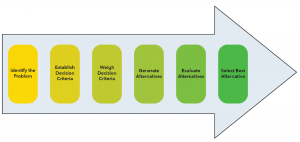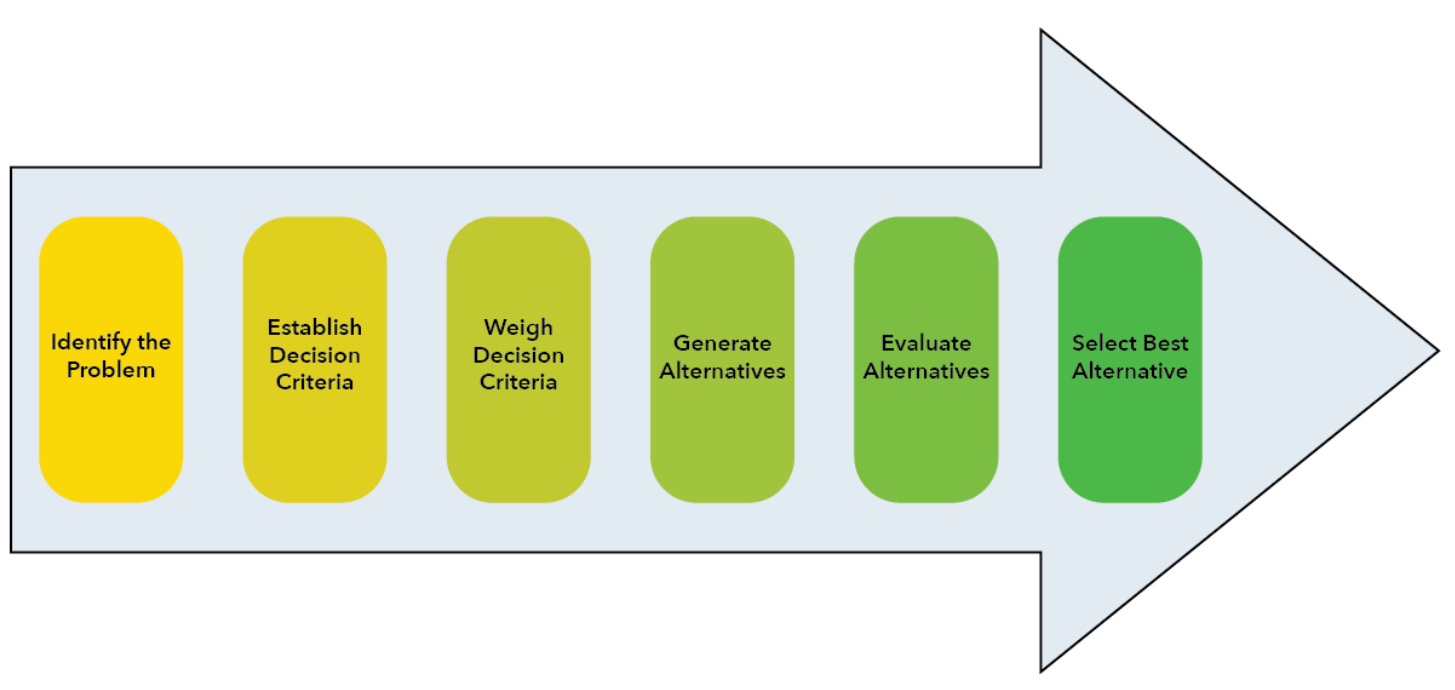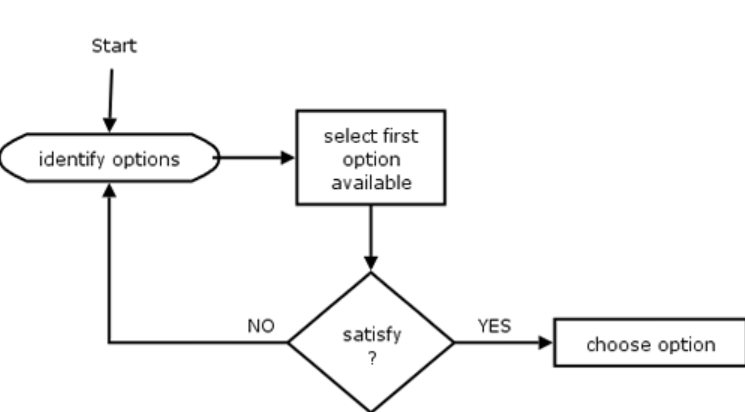
Making decisions is a critical part of business operations. However, making the right decision is not always easy. There are a number of different decision models that organizations can use to make better decisions. In this blog post, we will discuss some of the most popular decision models, what is their importance, and explain how they can be used to create desired business outcomes with the help of examples. In addition, we will also learn how could data and insights be used to drive decisions while implementing different kind of decision models. A decision scientist should be aware of these concepts fairly well.
Decision models & different types
Decision making models are tools that help individuals and organizations make better choices. There are a variety of different models available, but all share a common goal: to improve the quality of decisions. Some common Decision making models include the rational decision making model, the bounded rationality model (the satisficing model), Vroom-Yetton decision model, recognition-primed decision making model, and the intuitive decision making model. Each of these models has its own strengths and weaknesses, but all can be useful in the right situation. The key is to understand when to use each model and how to apply it in a way that will produce the best results. With the right decision making model, organizations and individuals can make choices that are more informed, efficient, and effective
Rational Decision Making Model
The rational decision making model is a popular choice for organizations because it is based on logical reasoning and objective analysis. This model starts with a problem or opportunity, then collects data and information about the situation. Once all relevant information has been gathered, it is analyzed to identify possible decision alternatives and related course of action / solutions. From there, the pros and cons of each solution are considered and a final decision is made. The picture below represents how do we arrive at the a final decision based on rational decision making.

This model works well when there is time to gather all relevant information and when all stakeholders are in agreement about the best course of action. However, it can be difficult to implement in fast-paced environments or when there are multiple stakeholders with different objectives. Data scientists can help in this phase in terms of performing data discovery related to different decisions or hypotheses. The insights derived from data discovery can then be used to arrive at the final decision and related course of action.
The best course of action and related outcome is laid out as a hypothesis. Hypothesis is then formulated formally. The following represents the next steps about how decision gets driven by the data & insights. These steps are followed in other decision making models as well described in this post.
- Identify the KPIs (leading & lagging) which will be used to measure the output / outcome and validate the hypothesis regarding actions resulting in desired outcome. These KPIs also become the insights called actionable insights.
- Create analytics solution such as a dashboard using Excel or data visualization tools such as Qliksense, Tableau, Google data studio etc
- Perform action and bring the data related to KPIs on dashboard
- Validate the hypothesis about whether the decision driving the action is resulting in desired outcome
Bounded Rationality Model (Satisficing Model)
The satisficing model is a simpler version of the rational decision making model. It is also termed as bounded rationality model. It is based on the idea that decision makers cannot always make perfect decisions because they are limited by time, resources, and information. In this model, decision makers set a goal or criteria for what is considered an acceptable solution. Once this criteria is met, the search for possible solutions stops. Otherwise, the search for different options continue. The picture below represents this idea.

This model works well when time is limited or when there is a large amount of information to consider. However, it can lead to sub-optimal decisions if the criteria for an acceptable solution is not set correctly. This allows decision makers to make decisions quickly without getting bogged down in too much analysis.
Once the decision is made based on the satisficing model, you can follow the steps mentioned in previous section to come up with KPIs, gather the data, build analytical solutions, analyze insights, perform action and validate the hypotheses (action – outcome) based on KPIs.
Intuitive Decision Making Model
Intuitive decision making is a process that relies on unconscious pattern recognition and previous experience to make decisions. Intuitive decision making is often contrasted with rational or logical decision making, which relies on deliberate, step-by-step reasoning. Intuitive decision making is a process that relies on gut feelings and instinctual judgments to make decisions. This type of decision making is often used in situations where there is not enough time to analyze all of the available options. Intuitive decision making can also be useful when the available information is overwhelming or uncertain. Some research has suggested that Intuitive decision making is more efficient than rational decision making, as it relies on patterns that have been learned through experience. Intuitive decision making can also lead to impulsive decisions that are not well thought-out. Intuitive decision making is typically faster and more efficient than rational decision making, but it can also lead to errors, biases, and bad decisions.
Recognition-Primed Decision Making Model
The recognition-primed decision making model suggests that humans use both logic and intuition when making decisions. This model starts with a recognition of the situation, then uses past experience to generate possible solutions. These solutions are then evaluated based on their feasibility and potential outcomes. A solution is finally selected and implemented in practice. If the solution does not work, the decision maker tries out alternate solutions until a successful one is found.
This model works well when there is time pressure and when there are multiple stakeholders with different objectives. Decision makers need to be experienced in the domain to make effective decisions using this model. Data scientists can help by providing data-driven insights that can be used to evaluate different solutions.
The steps mentioned in previous section about how decision gets driven by the data & insights are followed even in this model after the decision is made based on recognition-primed decision making model.
Vroom-Yetton-Jago Decision Making Model
The Vroom-Yetton-Jago decision making model is a tool that can be used to determine the best course of action in a given situation. This model starts with a series of questions about the situation, then uses the answers to these questions to identify the most appropriate decision making style.
This model is useful when there is need to make decisions in a variety of different situations. It helps to ensure that the right decision making style is used for each situation, which can lead to better results.
No matter what type of organization you are, or what type of problem you are facing, there is a decision making model that can help you find the best solution. By understanding the strengths and weaknesses of each model, you can choose the one that is best suited to your needs.
Decision making models are important for business as it helps in taking right decisions. Different decision making models are there which cater to different needs of an organization. Rational decision making model, satisficing model, intuitive decision making model, recognition-primed decision making model and Vroom-Yetton-Jago decision making model are some popular decision making models. Data & insights play a very important role in these models to drive the decisions. No matter what type of organization you are, or what type of problem you are facing, there is a decision making model that can help you find the best solution. By understanding the strengths and weaknesses of each model, you can choose the one that is best suited to your needs.
- Mathematics Topics for Machine Learning Beginners - July 6, 2025
- Questions to Ask When Thinking Like a Product Leader - July 3, 2025
- Three Approaches to Creating AI Agents: Code Examples - June 27, 2025
I found it very helpful. However the differences are not too understandable for me